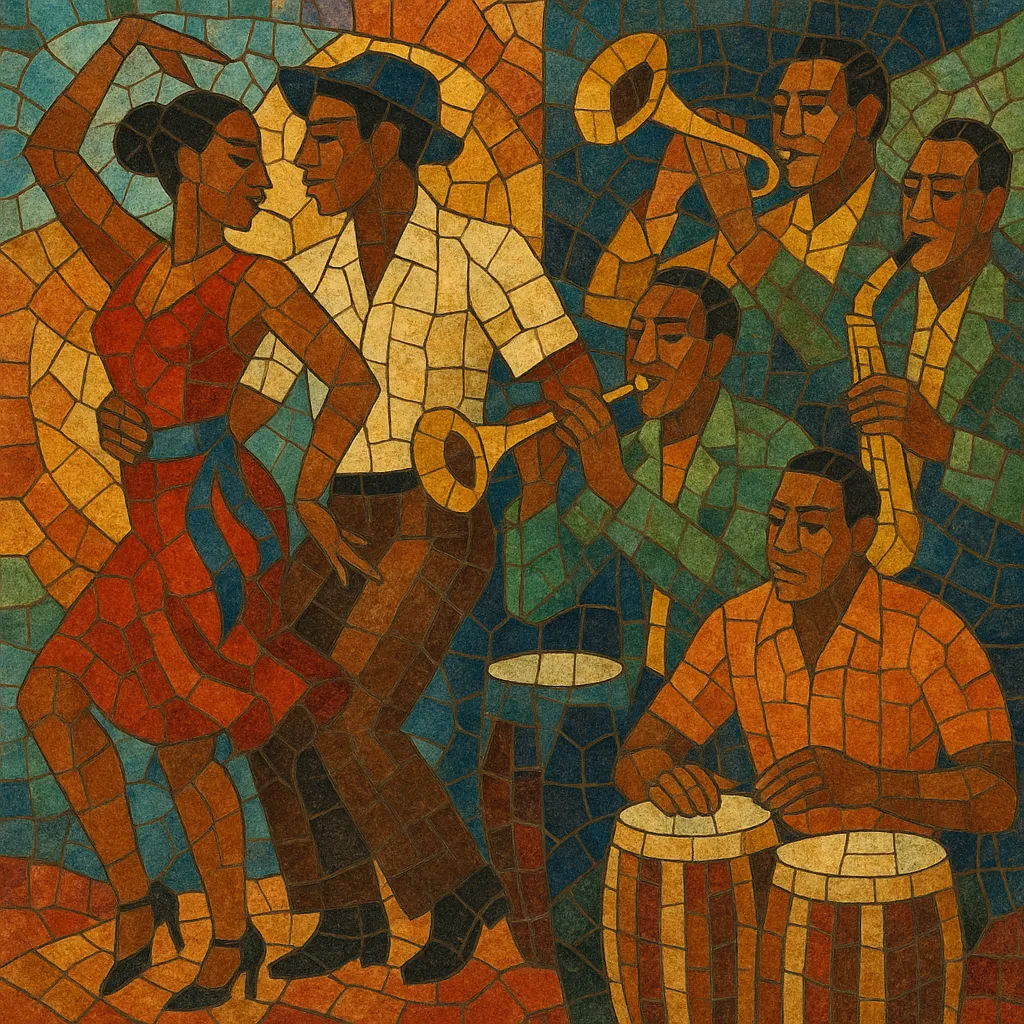Mambo is a Cuban dance music style that crystallized in the late 1930s from danzón and son montuno, then exploded internationally in the 1940s and 1950s. It is characterized by layered syncopations under the Afro‑Cuban clave, driving bass tumbaos, piano montunos, and powerful antiphonal horn riffs known as moñas or "mambo" sections.
In its classic big‑band form, mambo blends Cuban rhythmic vocabulary with jazz and swing arranging, featuring trumpets, trombones, and saxophones over a rhythm section of congas, bongos, timbales, cowbell, bass, and piano. The result is high‑energy, riff‑driven music built for social dancing and floor‑filling excitement.
Mambo emerged in Havana out of innovations inside danzón orchestras. In 1938, Orestes López (and his brother Israel "Cachao" López) composed a danzón titled "Mambo" for Arcaño y sus Maravillas, introducing a new, syncopated, montuno‑like instrumental section with propulsive riffs and Afro‑Cuban rhythmic tension. This "mambo" section fused the elegance of danzón with the drive of son montuno and rumba, while bandleaders absorbed harmonic colors and section writing from big‑band swing and jazz.
Dámaso Pérez Prado streamlined and amplified the concept into a brass‑heavy, riff‑centric dance style. After relocating to Mexico City in the mid‑1940s, he scored continental hits (e.g., "Mambo No. 5"), codifying the punchy, cinematic mambo sound. In New York, the Palladium Ballroom became the epicenter of the "Mambo Era" as Machito and his Afro‑Cubans, Tito Puente, and Tito Rodríguez expanded the idiom with virtuosic arrangements, tighter horn writing, and jazz improvisation.
By the early 1950s, mambo was a global dance phenomenon, influencing ballroom repertoires, film, and popular orchestras. Its signature call‑and‑response horn figures (moñas), tumbao bass, and timbales/cowbell drive defined the sound of Latin nightlife from Havana and Mexico City to New York, Los Angeles, and beyond.
Mambo’s arranging language and rhythmic engine seeded later genres. Musicians distilled its syncopation and montuno vocabulary into cha‑cha‑chá, pachanga, and eventually salsa. Its interface with jazz propelled Latin jazz/Afro‑Cuban jazz forward, while Nuyorican scenes folded mambo DNA into boogaloo and Latin soul. Though the craze subsided, mambo remains a core pillar of Afro‑Cuban and Latin dance music.


